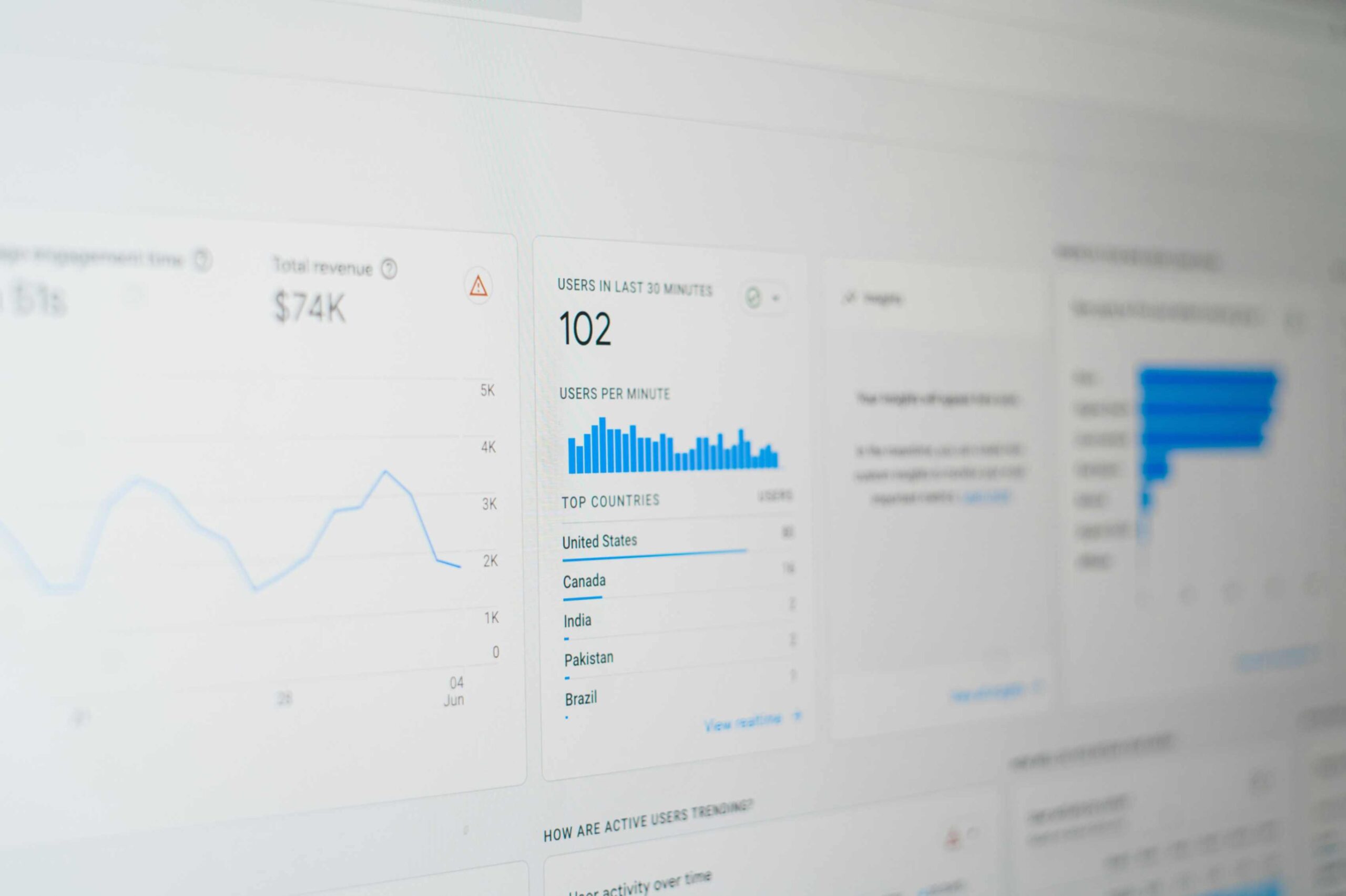Understanding Google Analytics Basics
Google Analytics basics help track website performance. It shows how visitors interact with your site, including traffic sources, user demographics, and behavior. Key metrics include page views, bounce rate, and conversion rate, crucial for optimizing marketing strategies and site design. Navigate through the dashboard to access reports on audience, acquisition, behaviour, and conversions. Understanding these basics empowers businesses to make data-driven decisions, improve user experience, and achieve marketing goals effectively.
Introduction to Google Analytics
Google Analytics offers valuable insights into website performance. It tracks visitor behaviour, traffic sources, and user demographics to gauge site effectiveness. Key metrics like page views, bounce rates, and conversions provide actionable data for optimizing marketing strategies and site usability. Access reports on audience characteristics, acquisition channels, and user interactions through its user-friendly dashboard. Understanding Google Analytics helps businesses make informed decisions, improve online presence, and enhance overall digital marketing efforts for better results and user engagement.
What is Google Analytics and why is it important for digital marketing?
Google Analytics is a powerful tool for analyzing website traffic and user behaviour. It provides insights into visitor demographics, acquisition channels, and engagement metrics like bounce rates and conversion rates. Crucial for digital marketing, it helps businesses understand their audience, optimize campaigns, and improve website performance. By tracking and interpreting data, marketers can make informed decisions, tailor strategies to user preferences, and enhance overall online presence, ultimately driving better ROI and achieving business goals more effectively.
Setting Up Google Analytics for Your Website
Setting up Google Analytics for your website is important to track how well it performs. First, create an account and get a tracking ID. Put the tracking code on every page to see what visitors do. Set goals to track sales or sign-ups. Use filters to ignore visits from inside your company. Check reports to learn about your visitors. Use this information to improve your website and marketing so more people find and use your site.
Setting Up Google Analytics
Setting up Google Analytics is crucial for understanding your website’s performance. Begin by creating an account and obtaining a tracking ID. Install the tracking code on every page of your site to monitor visitor activity accurately. Set up goals to track specific actions, like purchases or sign-ups, and define key metrics to measure success. Use filters to exclude internal traffic and ensure data reliability. Explore reports to gain insights into audience behaviour, helping you optimize your website and marketing strategies effectively.
Step-by-step guide to installing Google Analytics on your website
Installing Google Analytics on your website is straightforward. First, sign up for an account and get your tracking ID. Then, add the tracking code provided by Google to every page of your website. This code tracks visitor activity and gathers data. Set up goals in your Analytics account to track conversions, like sales or sign-ups. Use filters to exclude internal traffic from your reports. Finally, explore the Analytics dashboard to analyze visitor behaviour and improve your site based on the insights gained.
Key Metrics to Track in Google Analytics
Key metrics to track in Google Analytics include:
- Sessions: Total visits to your site.
- Bounce Rate: Percentage of visitors who leave after viewing only one page.
- Conversion Rate: Percentage of visitors who complete a desired action, like making a purchase.
- Average Session Duration: Average time visitors spend on your site.
- Traffic Sources: Where your visitors come from (e.g., search engines, social media).
- Pageviews: Number of pages viewed by visitors.
- Exit Pages: Pages where visitors commonly leave your site. Tracking these metrics helps optimize your website’s performance and marketing efforts.
Essential Metrics in Google Analytics
Essential metrics in Google Analytics provide crucial insights into website performance. Key metrics include:
- Sessions: Total visits to your site.
- Bounce Rate: Percentage of visitors who leave after viewing only one page.
- Conversion Rate: Percentage of visitors who complete a desired action.
- Average Session Duration: Average time visitors spend on your site.
- Traffic Sources: Where your visitors come from (e.g., search engines, social media).
- Pageviews: Number of pages viewed by visitors.
- Goal Completions: Number of times a specific goal is achieved, like a purchase or form submission. Tracking these metrics helps optimize strategies and enhance user experience.
Which metrics matter most for digital marketing success?
The most crucial metrics for digital marketing success include:
- Conversion Rate: Measures the percentage of visitors who complete desired actions, like making a purchase or signing up.
- Traffic Sources: Identifies where your website visitors come from (e.g., search engines, social media), helping focus marketing efforts.
- Bounce Rate: Indicates the percentage of visitors who leave after viewing only one page, reflecting site engagement.
- Average Session Duration: This shows how long visitors spend on your site, indicating content engagement.
- ROI (Return on Investment): Measures the profitability of marketing campaigns relative to their costs. Tracking these metrics guides effective marketing strategies and optimizations.
Using Google Analytics for Audience Insights
Using Google Analytics for audience insights helps you understand your visitors better. Track demographics like age, gender, and location to tailor your content. Analyze interests to create relevant marketing campaigns. Review behaviour metrics such as session duration and bounce rate to improve user experience. Identify traffic sources to see where visitors come from and optimize those channels. Monitor new vs. returning visitors to gauge loyalty. These insights help refine your strategies, making your website more effective and engaging.
Audience Analysis with Google Analytics
Using Google Analytics for audience analysis helps you understand your visitors better. Track details like age, gender, and location to customize your content and marketing. Check their interests to make relevant campaigns. Look at behaviour metrics like session duration and bounce rate to improve user experience. Identify where visitors come from to optimize those channels. Monitor new vs. returning visitors to measure loyalty. These insights help improve your strategies, making your website more effective and engaging for visitors.
How to understand your audience demographics and behaviours
To understand your audience’s demographics and behaviours, use Google Analytics. Track age, gender, and location to customize your content and marketing. Check interests to make relevant campaigns. Look at behaviour metrics like session duration and bounce rate to see how visitors use your site. Identify where visitors come from to improve those channels. Monitor new vs. returning visitors to measure loyalty. These insights help improve your strategies, making your website more effective and engaging for your audience.
Analyzing Traffic Sources with Google Analytics
Analyzing traffic sources with Google Analytics helps you understand where your website visitors come from. It identifies which channels—such as search engines, social media, or referrals—drive the most traffic. This analysis shows where to focus marketing efforts for better results. By tracking these sources, you can optimize campaigns and improve user engagement. Understanding traffic origins helps refine strategies, making your website more effective in attracting and retaining visitors from various online platforms.
Traffic Sources Analysis
Analyzing traffic sources with Google Analytics shows where your website visitors come from. It highlights main channels like search engines, social media, or links from other sites. This helps focus your marketing efforts where they work best. By tracking these sources, you can improve your campaigns and how visitors interact with your site. Knowing where traffic comes from helps you make your website more appealing and keeps visitors interested from different online sources.
Evaluating organic, paid, and referral traffic for better marketing decisions
Reviewing organic, paid, and referral traffic helps you make smarter marketing choices. Organic traffic comes from search engines naturally. Paid traffic is from ads you pay for. Referral traffic comes from other websites linking to yours. Understanding these helps you know where to invest your marketing efforts. By tracking these sources, you can improve your strategies to attract more visitors. Knowing which sources bring traffic helps you plan better and make your website more successful.




